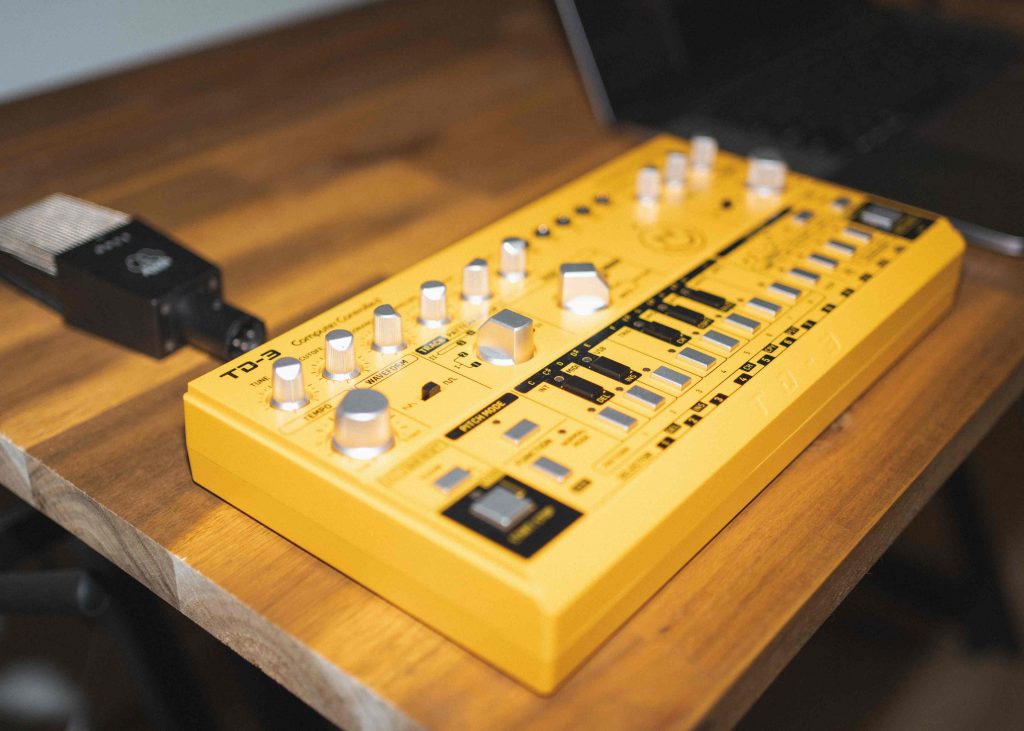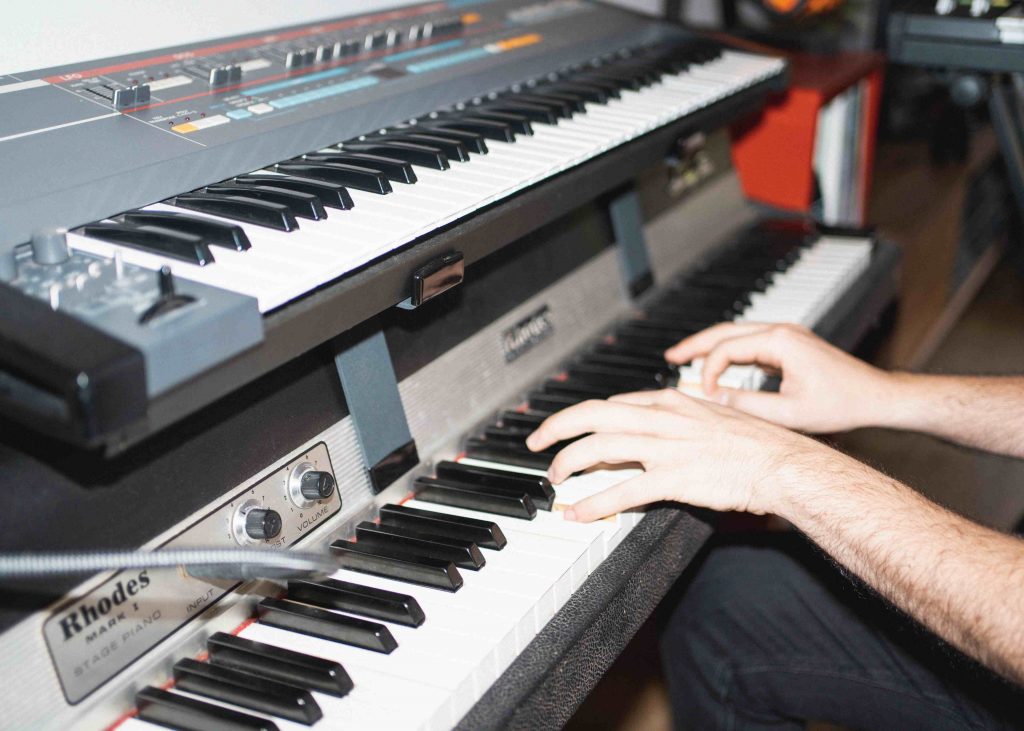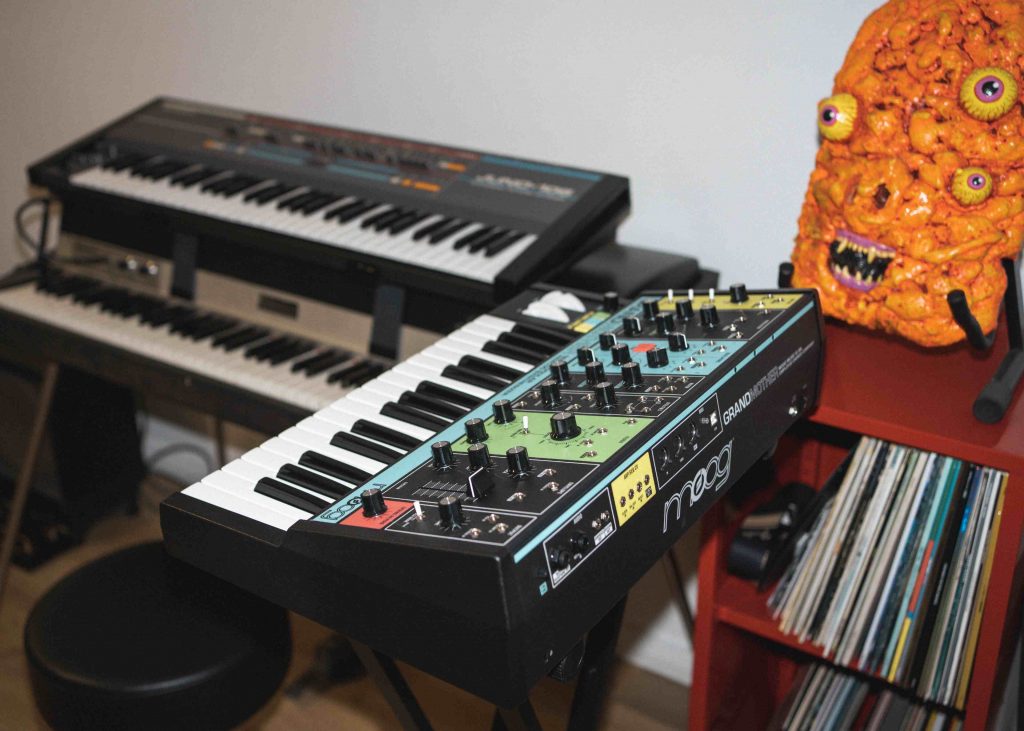Get the low down on some hot home recording tips.
We spoke to Mickey Kojak back in 2022, in the midst of all of us working from home, musicians working from a home studio. The majority of Ultra was written, recorded, and produced in the months after our first lockdown in 2020. I had just finished playing the best shows of my life and was inspired to make energetic, live-focused electronic music. Given the limitations of the lockdown, getting into my usual studio spots to record wasn’t always an option, so a lot of the recording was done at home in the box with bare bones but a very creatively-focused set up.
Read all the latest features, columns and more here.
Drums Sample
Pick your samples wisely
“Even though I used samples for the majority of the drums, I treated it like a drum kit you would set up for recording. I used the same kick and snare samples across most of the record and ran the same drum kit plugin in my DAW (Logic Pro), playing in all the hi-hats, cymbal, and tom parts on my keyboard as if it were a track run-through.”
“The percussion and synth-y bleeps and bloops all came from various sources. I have a Yamaha CS01 which I really like for metronomic synth percussion sounds and nothing beats a Moog for self- oscillating madness.”

Bass guitar
“The two main sources of bass for the record were a ’70s Fender Jazz and Novation Bass Station II. I’ve had a lot of different synths in my time (24 to be exact, eep) and I was so amazed at how incredibly fat, punchy, and versatile the Bass Station was.
I had Moogs, Korgs and a bunch of software plugins I could use, but I always ended up reaching for my Bass Station.
Both of these were DI’d as clean as can be.”

Synths – don’t be afraid to experiment
“The digital synth sounds on the record are primarily from a Casio CZ1000 or an Ensoniq ESQ1. When I couldn’t be bothered plugging those in, I reached for some of the Arturia retro synth recreations, which are bloody incredible. In particular the Synclavier provided some whacky and wild sounds, which were great for effects.”

Guitars – Draw upon your tastes
“The guitar sounds on the record were really fun to craft and are primarily recorded on my Custom Shop Tele. There was a real push and pull between my manager (who I mixed the record with) and I on what tones we were aiming for.”
“I wanted gnarly, sludgy guitars and he wanted to hear those transients. I really love the sound of metal guitars, especially the ones on the first Slipknot record and the new Doom soundtracks made by Mick Gordon. After a while, we found a happy middle ground but I do wonder what could have been if we turned all those knobs up to 11!”
Vocals – Create space
“I recorded a lot of draft vocals at home on an SM7, but when it came time to record properly, I had a pretty slick and simple chain set up with a vintage C12 running into a Neve 1073. My manager tracked these vocals and we were pretty keen to get warm and raw with these, so we pushed the mic and pre right up to its limits.
In terms of processing, we had a lot of corrective EQ (my voice gets quite nasally when pushed into the mic and pre), some savage compression provided by a Fairchild 670 plugin, and a very tight slap delay on most lead takes.
When it came to backing vocals, the SM7 was a great choice as it was tonally very different and stayed right out of the way.”
I had Moogs, Korgs and a bunch of software plugins I could use, but I always ended up reaching for my Bass Station.
Mixdown – Get brutal!
“I wrote, recorded and produced all of the songs in Logic Pro. In terms of mixing, I got them to a point I was really happy with, maybe 85-90 per cent of where they eventually landed. Bouncing down all the stems and working with my manager (former owner of REC Studios) on the final mix was a great way to create some space from the production/writing and move PURELY into the mixdown.
Again, there was a push and pull where I wanted to keep a lot of the grunt and spirit I had baked into the production, but sometimes it was just too much, cluttered. A lot of the mixdown process was decision making; what was important? What did we want to hear and when?
Once we were happy with the mix, we ran all the tracks through an Avalon 747, a great piece of kit that provided a lot of glue and consistency to our mix and some high end shine when we needed it.”
Keep in touch with Mickey and his home studio on his Instagram.

